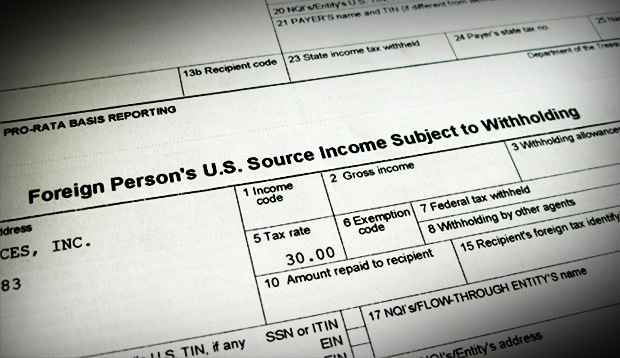Whether it is a piece of fiction that is in concern, a blog, an article, or an essay, a question that is often asked is ‘what point of view should my [insert type of writing] be in?’ Should it be in first-person point of view or in the third? There was a time we asked that too; and how we’ve come to figure out the answer to that is to understand the limitations of first-person perspective and the third-person perspective, the relationship you wish to have with your audience, and how you wish to be received by them.
Limitations
A difference between first-person perspective and third-person perspective is the amount of information you can reveal to readers. With first-person perspective, it is limited to the person telling the story (i.e. the author/character) and what he/she can see. If they’re not physically there to experience something and they don’t have special powers to be everywhere, to know and feel what others are thinking and feeling, you can’t tell it in your story.
The limitations for the third-person perspective ranges from none to being as limited as the first-person perspective. The third-person omniscient perspective gives you the most freedom. With the omniscient point of view, you, the author, take on a sort of godly role; you are able to be everywhere, see everything, and know everything about the world you are narrating. So, you could be at the train station one minute, and the next you’re over at the seaside listening to the sounds the waves are making without the need of any character being present to experience it.
The third-person subjective/limited perspective is one that is most restrictive. This perspective is very much similar to the first-person perspective: you write the story in the point of view of one character, only it is in third person (i.e. “he”/”she” and “they” instead of “I” and “we”).
There is one other point of view in the third-person, that is, the third-person-objective perspective. This is a point of view where you only write what you see and hear, but not go into the thoughts and feelings of the characters. You’re like a fly on the wall, an impartial observer, that reports just on what’s going on in front of you.
One other limitation we will mention relates to fiction writing and focusing on multiple characters. If you’re thinking of writing a multiple point of view story, you can. You can also tell it in first-person or the third-person perspective. Just know that when you switch between character point of views in either first-person or third-person, you do this scene to scene (at the very least) or chapter to chapter; but not in the middle of a scene.
Just an extra piece of information we discovered that we think you might find helpful is that you can even switch between first-person point of view and third-person point within a story. If you do this, you must have a very good reason to why you are doing this. Does it serve an important purpose? Does changing your story from (say) first-person point of view access information better than if you told it in third-person point of view? Simply, does it add to the story?
Your Relationship with the Audience
The other thing to consider is what kind of relationship you want to have with the audience—how do you want to be received by your audience? Do you want to maintain a sort of distance from your readers and sound authoritative—or do you want to connect with your readers, have a closer relationship with them and express your thoughts and ideas? If you want the former, then you’d be writing it in third-person; if you wish for the latter, you’d be opting for writing it in first-person.
How we like to think of first-person and third-person perspectives is they’re kind of like binary opposites: informal/formal, intimate/distant, and biased/unbiased. First-person would take the informal, intimate, and biased tags; while third-person would take the formal, distant, and unbiased tags.
In regards to first-person perspective being less formal than third-person, using ‘I’ or ‘we’ is considered personal and informal. In academic writing and business letters for example, they generally do not use first-person; so if you wish to sound formal, write in third-person. This blog is not going to discuss the differences between formal and informal writing, but just in case you’re wondering what other things you can’t do in formal writing, here’s a site that might help you with that: The Difference Between Formal and Informal Writing.
To elaborate just briefly on ‘intimate/distant’, we’ll use fiction writing as an example. When you write a story in third-person, you are using ‘he’, ‘she’, ‘they’; and when you write the story in first-person, you use ‘I’ and ‘we’. If you imagine yourself as a reader reading a story that focuses on the story’s main character in the first-person perspective and then in the third-person subjective perspective, you might notice that there’s a closer relationship to the main character in the story that is written in first-person than the one in third-person. This might be because in first-person point of view, we hear the thoughts and feelings directly from the character themselves; whereas, in the third-person perspective, the use of third-person pronouns makes us feel like the character isn’t speaking to us; rather, the character had spoken to the author, and the author is now relaying the information back to us (at least that’s how we feel with third point of view stories).
This distance that the third-person perspective has also makes it more objective and more credible than the first-person perspective. In writings such as the stories in newspapers, they use the third person point of view because it gives the reader an impression of distance and objectivity: it gives the impression that he/she isn’t in the action; he/she is standing afar looking on and listening whilst he/she recounts the facts/ongoings of the event in front of them.
So there you have it. We hope this has been helpful if you’ve been a bit indecisive about which point of view to write your particular piece in. Hopefully, by considering the limitations of the different point of views, what relationship you wish to have with the audience, and how you wish to be received, you’ve decided on the point of view best for your writing.
Happy writing!
– Julia and Tania. : o) : o).
ADVERTISEMENT




